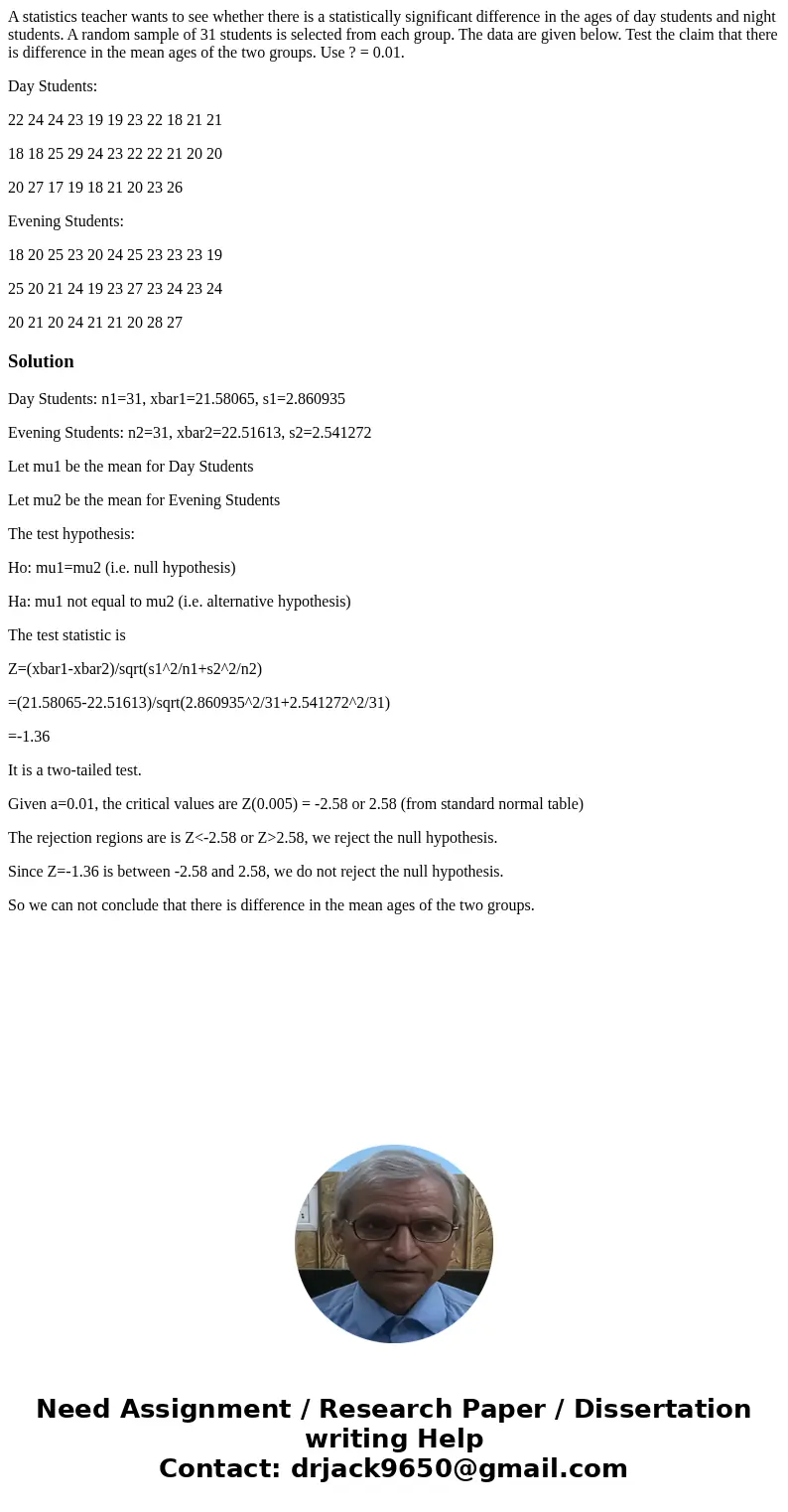A statistics teacher wants to see whether there is a statist
A statistics teacher wants to see whether there is a statistically significant difference in the ages of day students and night students. A random sample of 31 students is selected from each group. The data are given below. Test the claim that there is difference in the mean ages of the two groups. Use ? = 0.01.
Day Students:
22 24 24 23 19 19 23 22 18 21 21
18 18 25 29 24 23 22 22 21 20 20
20 27 17 19 18 21 20 23 26
Evening Students:
18 20 25 23 20 24 25 23 23 23 19
25 20 21 24 19 23 27 23 24 23 24
20 21 20 24 21 21 20 28 27
Solution
Day Students: n1=31, xbar1=21.58065, s1=2.860935
Evening Students: n2=31, xbar2=22.51613, s2=2.541272
Let mu1 be the mean for Day Students
Let mu2 be the mean for Evening Students
The test hypothesis:
Ho: mu1=mu2 (i.e. null hypothesis)
Ha: mu1 not equal to mu2 (i.e. alternative hypothesis)
The test statistic is
Z=(xbar1-xbar2)/sqrt(s1^2/n1+s2^2/n2)
=(21.58065-22.51613)/sqrt(2.860935^2/31+2.541272^2/31)
=-1.36
It is a two-tailed test.
Given a=0.01, the critical values are Z(0.005) = -2.58 or 2.58 (from standard normal table)
The rejection regions are is Z<-2.58 or Z>2.58, we reject the null hypothesis.
Since Z=-1.36 is between -2.58 and 2.58, we do not reject the null hypothesis.
So we can not conclude that there is difference in the mean ages of the two groups.

 Homework Sourse
Homework Sourse